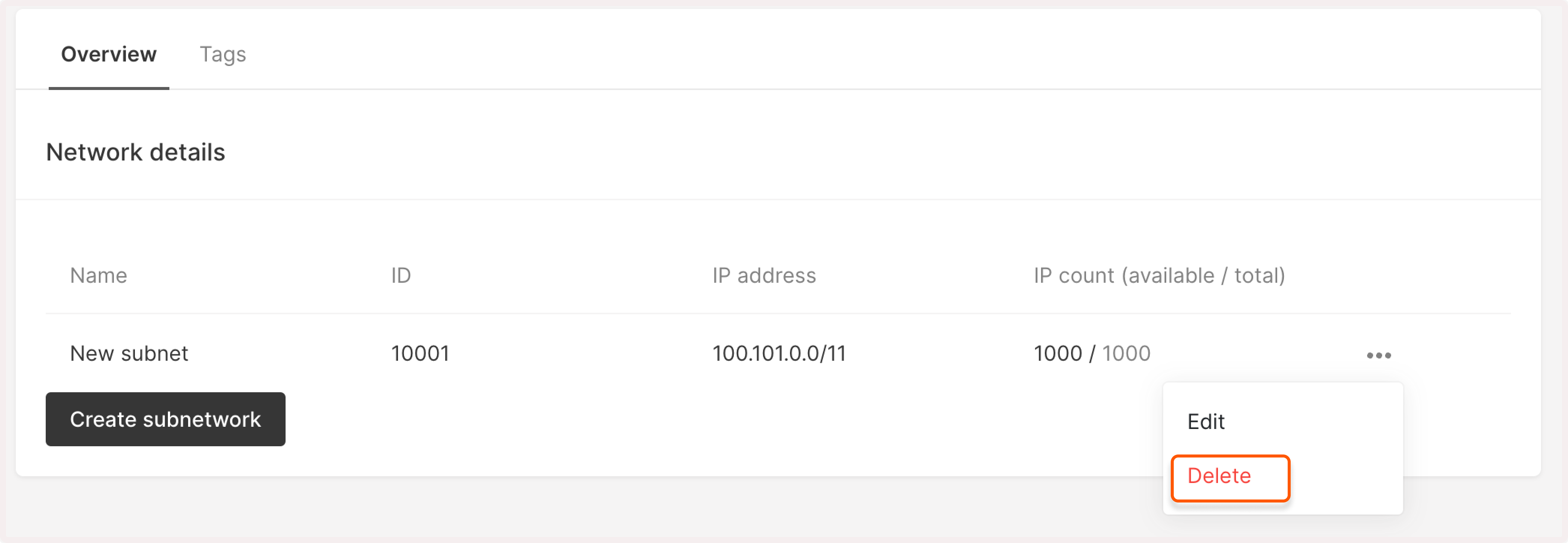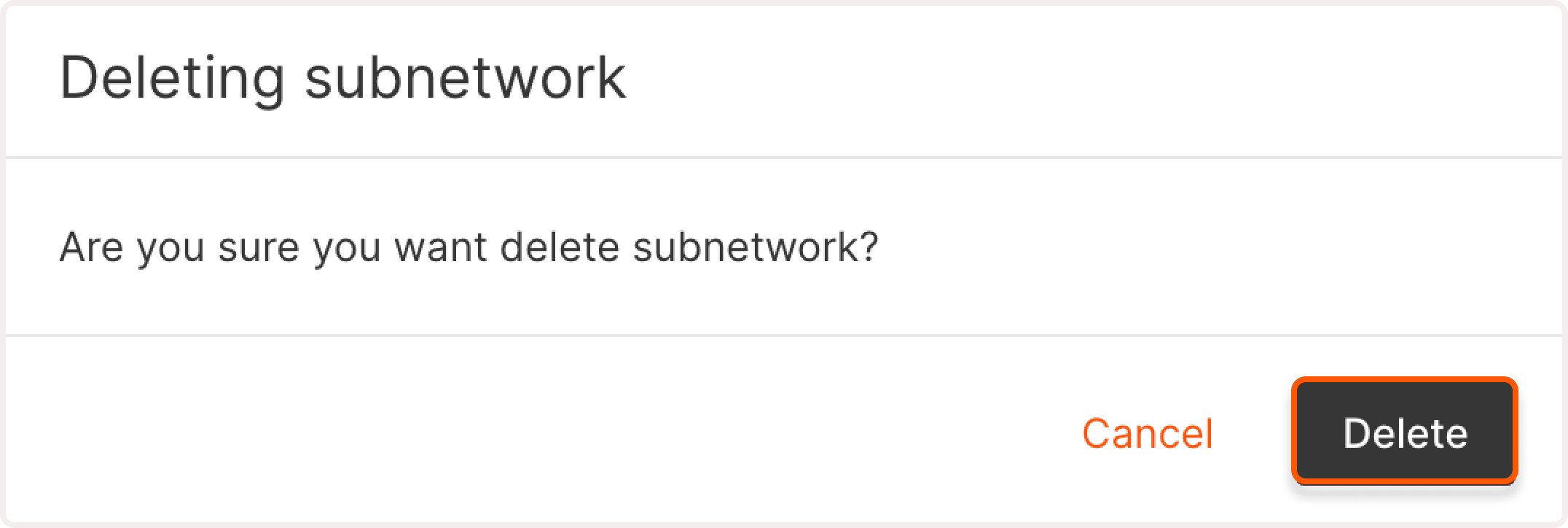Create a subnetwork
You can create a subnetwork in two ways: during the creation of a Gcore Virtual Machine or from the Networks page, which is described in the following section.Create a subnetwork from the networks page
1. In the Gcore Customer Portal, navigate to Cloud > Networking.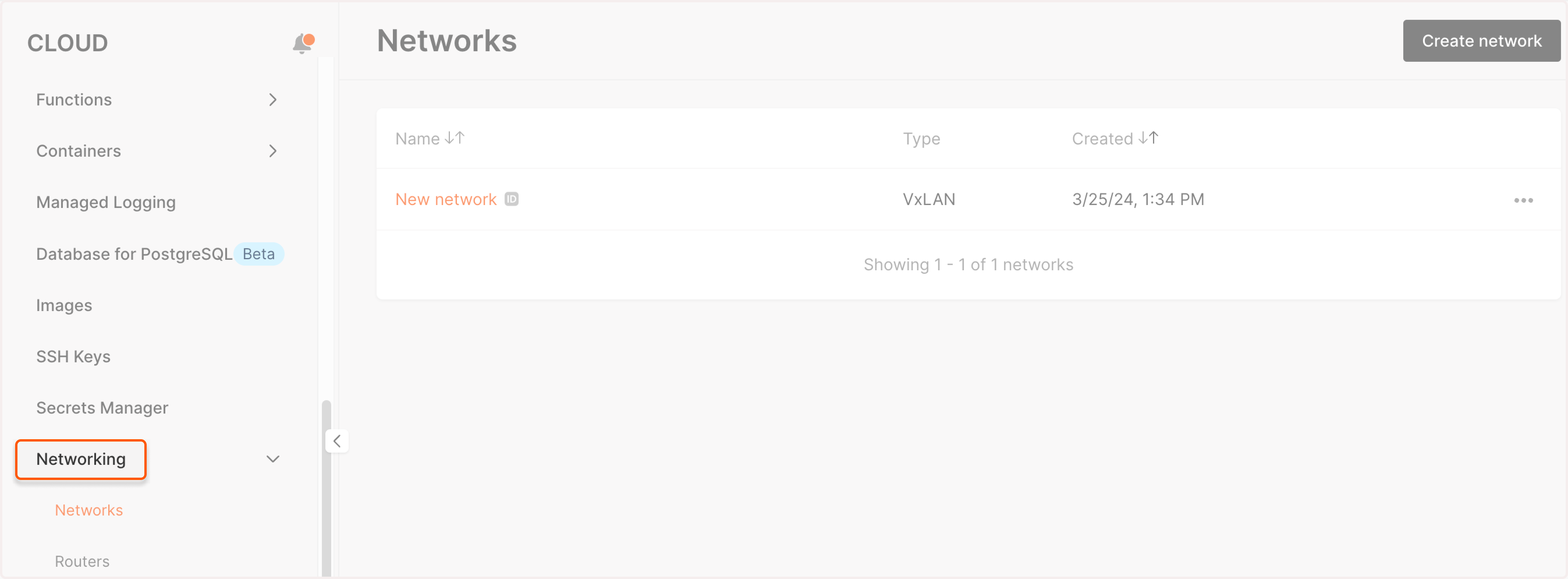

- 10.0.0.0/8
- 172.16.0.0/12
- 192.168.0.0/16
- fc00::/7
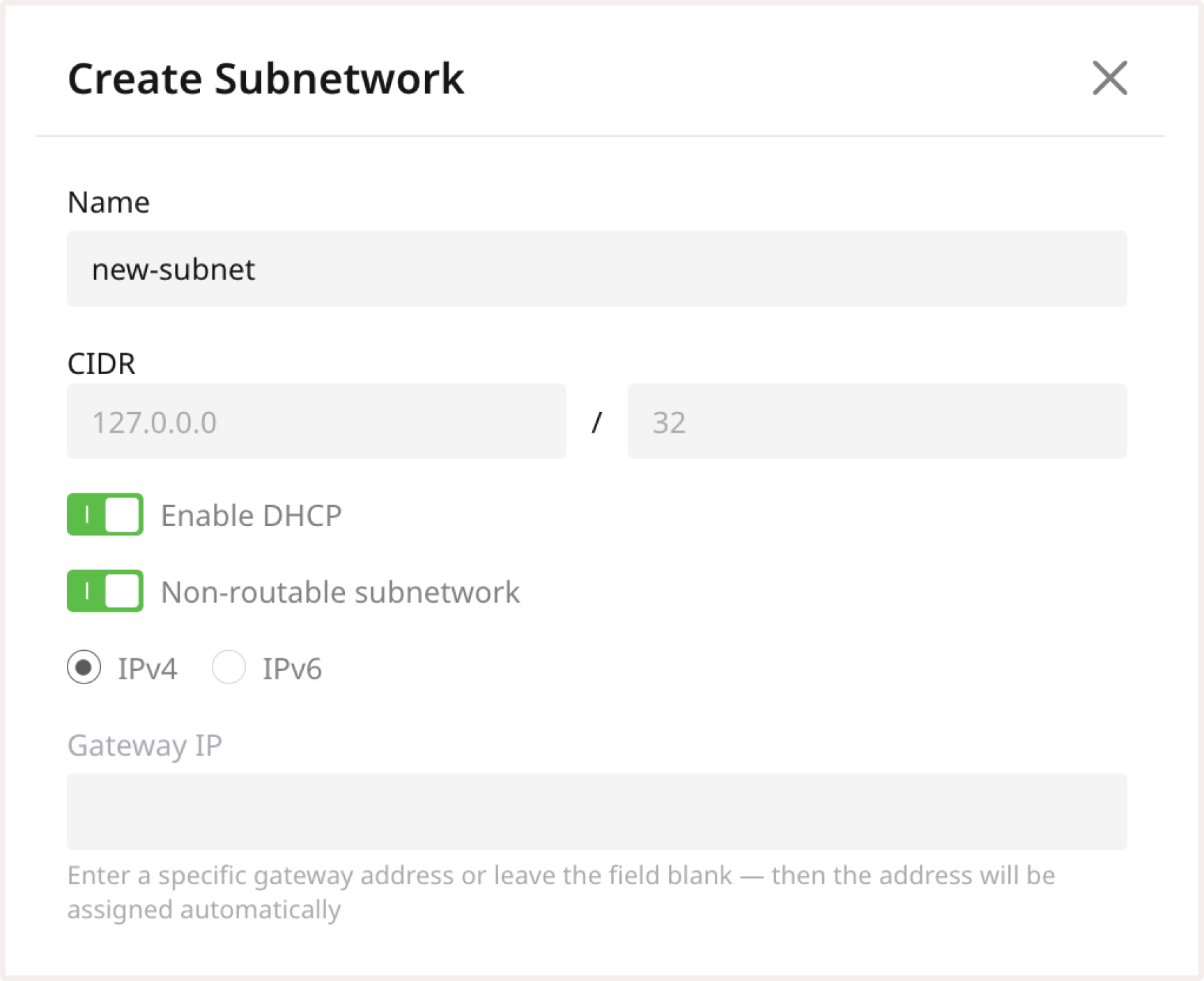
- Destination: Specify the network or host where the traffic is intended to go.
- Next hop: Choose the intermediate device (e.g., a router or gateway) through which traffic must pass to reach the destination.
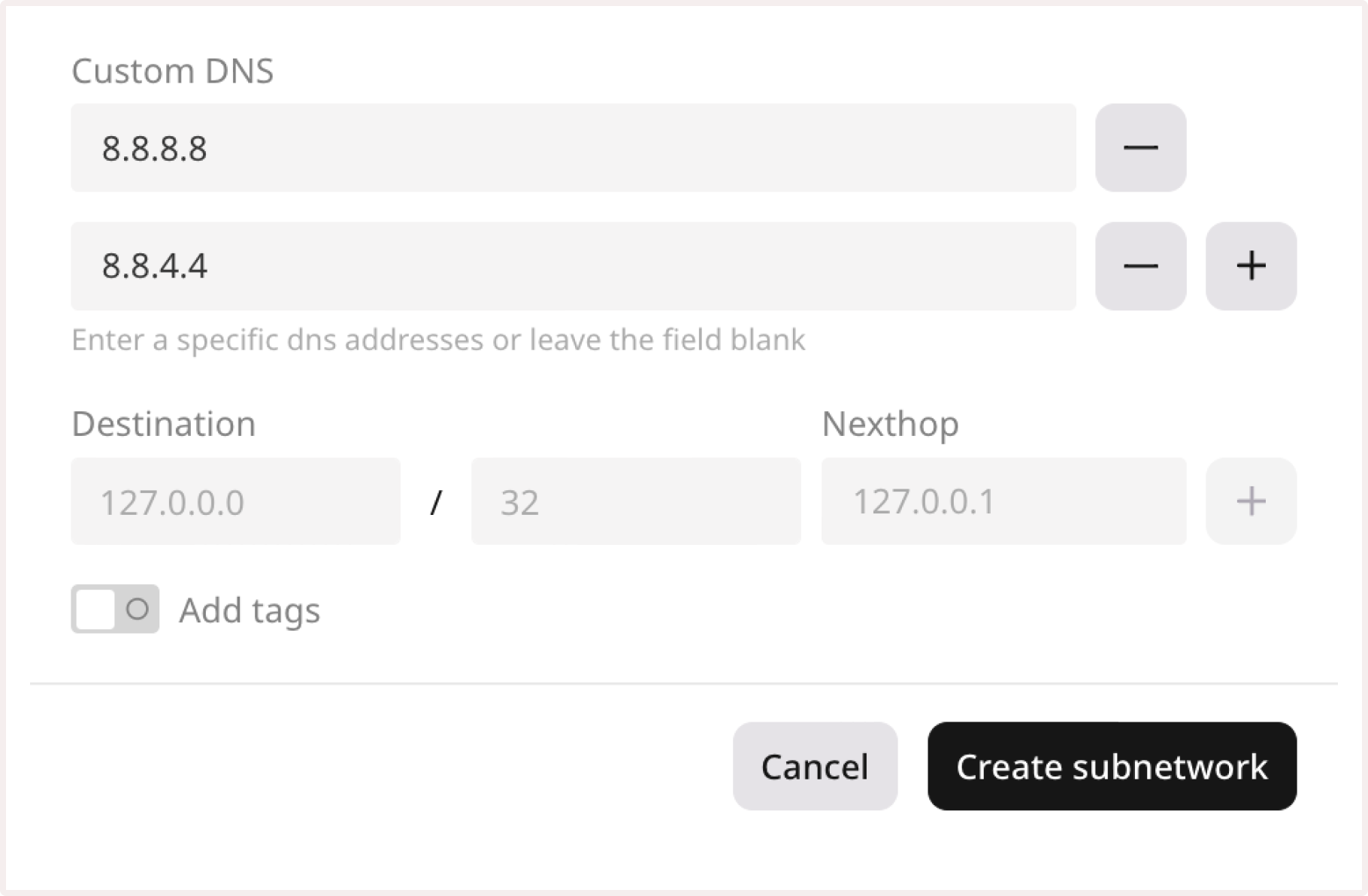
Set the IP range
While creating a subnetwork, specify the address range in the CIDR format.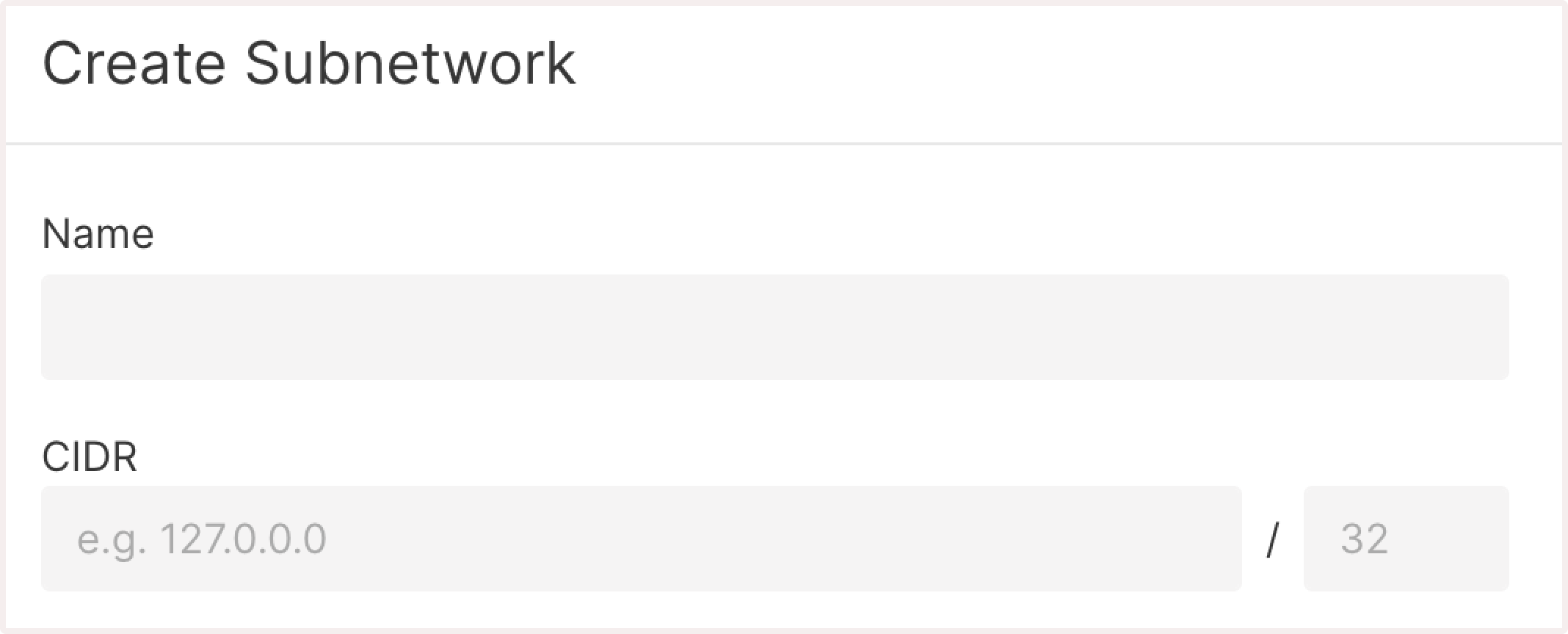
- 10.0.0.0 - 10.255.255.255
- 172.16.0.0 - 172.31.255.255
- 192.168.0.0 - 192.168.255.255
Comparison of IPv4 and IPv6 subnets
The table below outlines key networking features for IPv4 and IPv6, including supported CIDR ranges, subnet mask configurations, and connectivity options.| Feature | IPv4 | IPv6 |
|---|---|---|
| CIDR ranges | 10.0.0.0/8 172.16.0.0/12 192.168.0.0/16 | fc00::/7 |
| Subnet mask range | /8 - /29 for 10.0.0.0/8 /12 - /29 for 172.16.0.0/12 /16 - /29 for 192.168.0.0/16 | /7 - /126 |
| Floating IP support | Yes | No |
| Internet access | Yes | No – private IPv6 subnets are not publicly routable Yes – public IPv6 |
| DHCP configuration | Can be enabled or disabled | Cannot be changed after creation |
| Routing between subnets | Allowed within the same network | Allowed within the same network |
| UI availability | Available to all users | Available to all users |
Gateway IP validation
Validation ensures proper configuration and prevents errors during creation or updates. The gateway IP address must belong to the defined CIDR range of the subnetwork. For example, if the CIDR is 192.168.0.0/24, the gateway IP must be within the 192.168.0.0 - 192.168.0.255 range.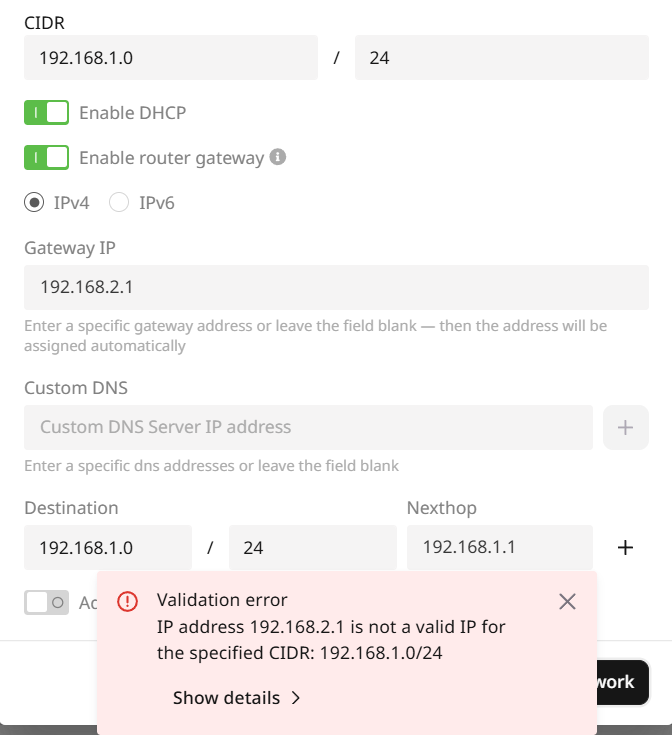
Configure network routing
A routed network is a private network that’s already connected to a router with a public interface. All Virtual Machines in such networks can access the internet through the router and accept incoming connections. By default, a subnetwork in the cloud is created with internet access, which means that it’s routable. If you need to restrict machines from external connections, you need to enable the Non-routable subnetwork option while creating a subnetwork.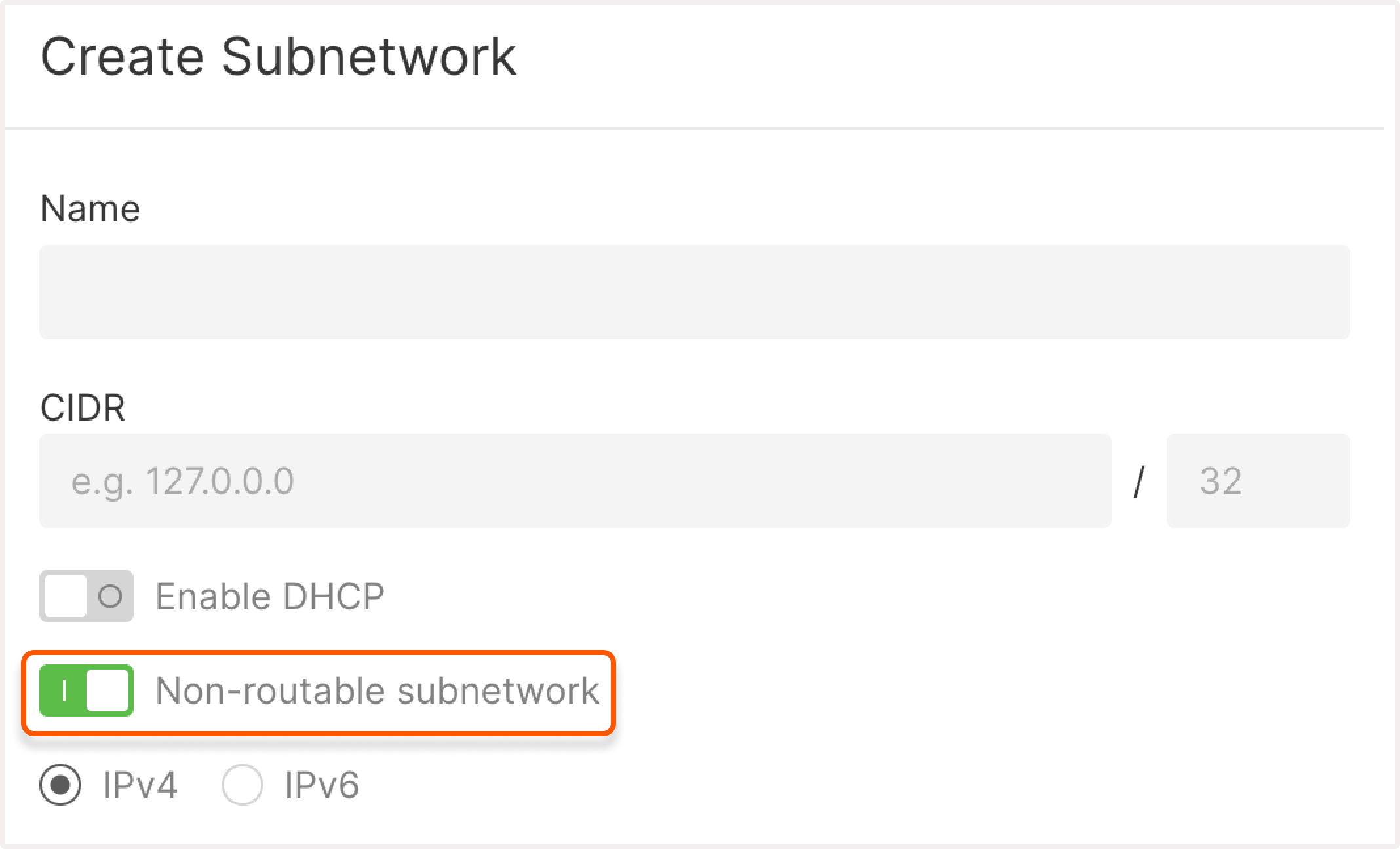
Set up the default gateway
If your Gcore Virtual Machine or Gcore Bare Metal server has both public and private interfaces, disable the default gateway for all private subnetworks. Otherwise, there will be a conflict with the default gateway on the server, and you won’t be able to connect to the server. If you need to configure a gateway in a private subnetwork, ensure that only one of your subnetworks is routable. To do this, check the subnetwork settings and verify that only one subnetwork has the Enable router gateway toggle active.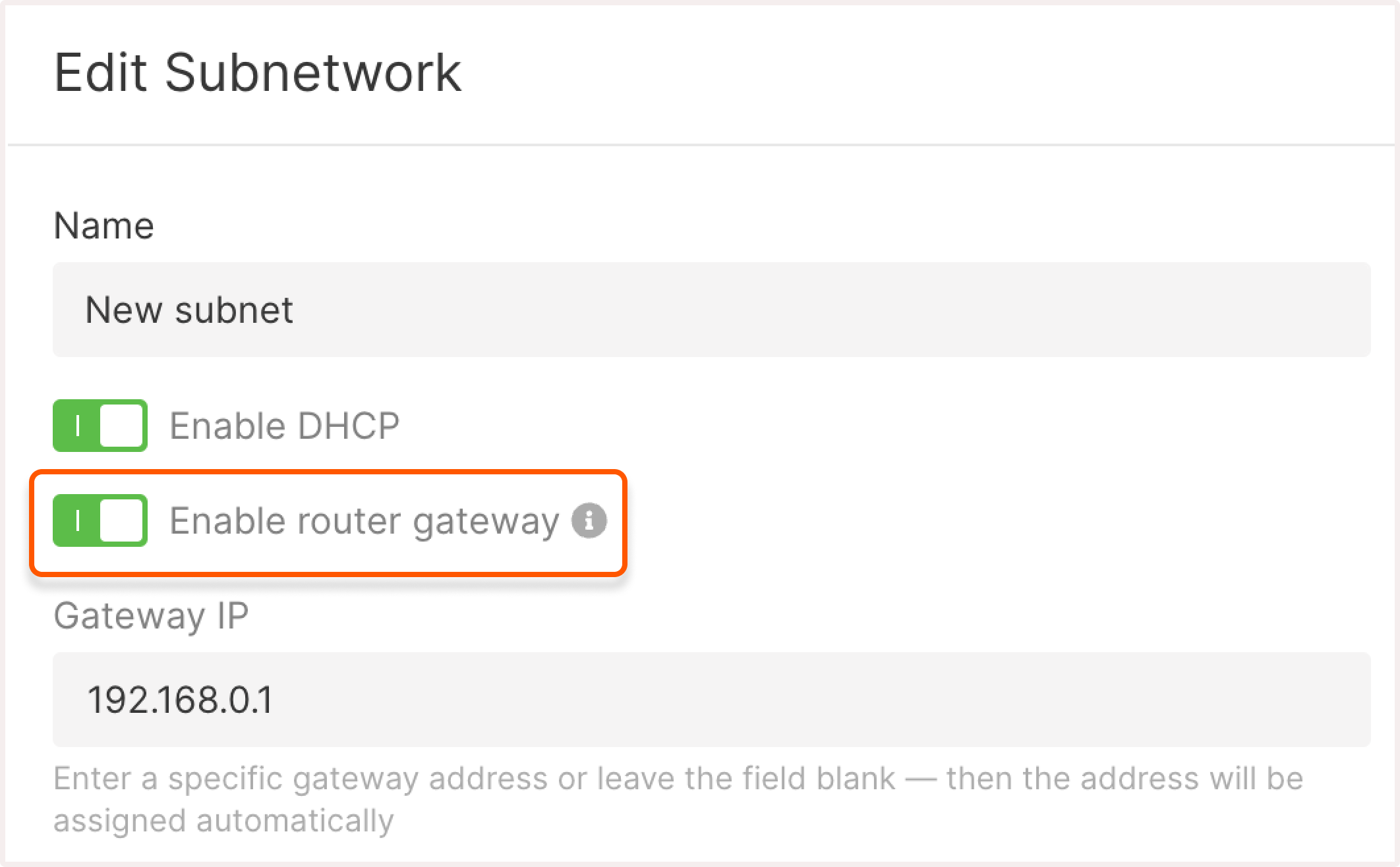
Manage subnetworks
You can view and manage subnetworks on the Networking page of the Gcore Customer Portal.Rename a subnetwork
1. In the Gcore Customer Portal, navigate to Cloud > Networking.
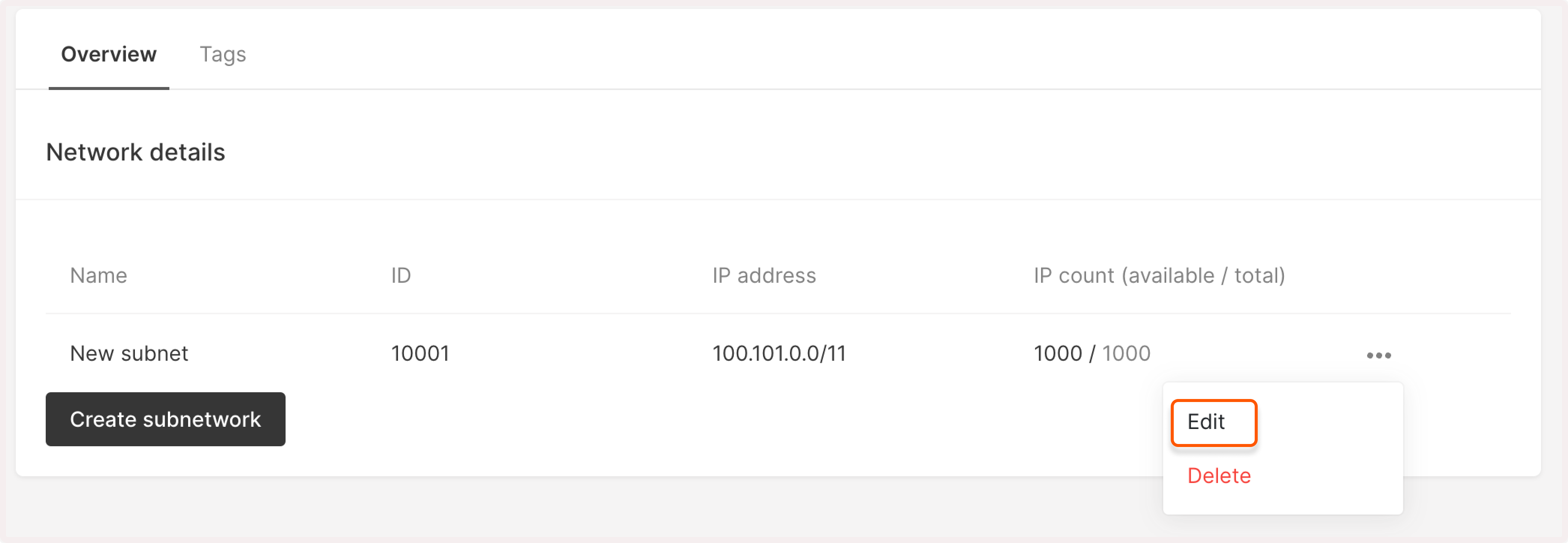
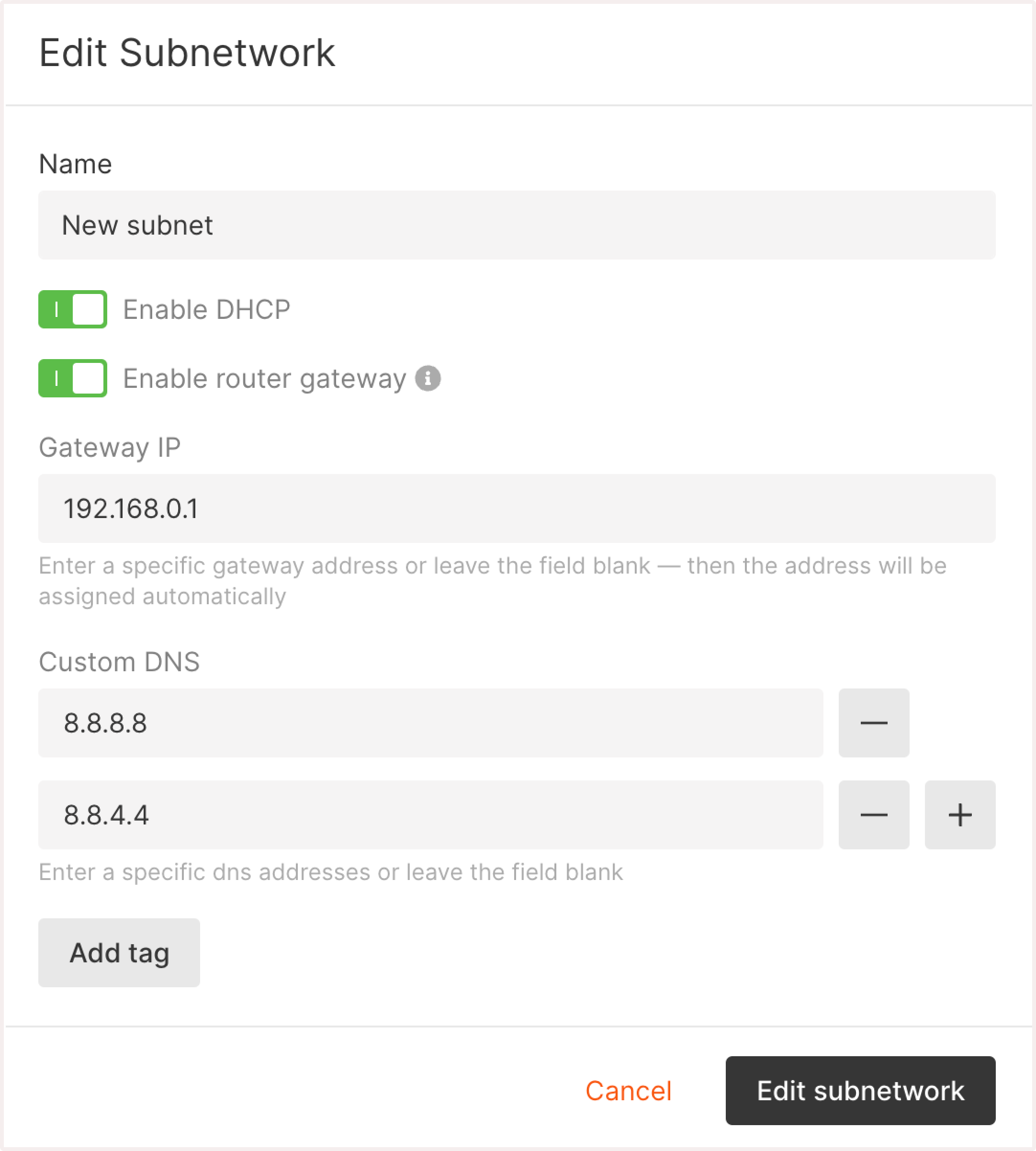
Delete a subnetwork
You can delete a subnetwork that’s not attached to a VM. To delete a subnetwork: 1. In the Gcore Customer Portal, navigate to Cloud > Networking.
